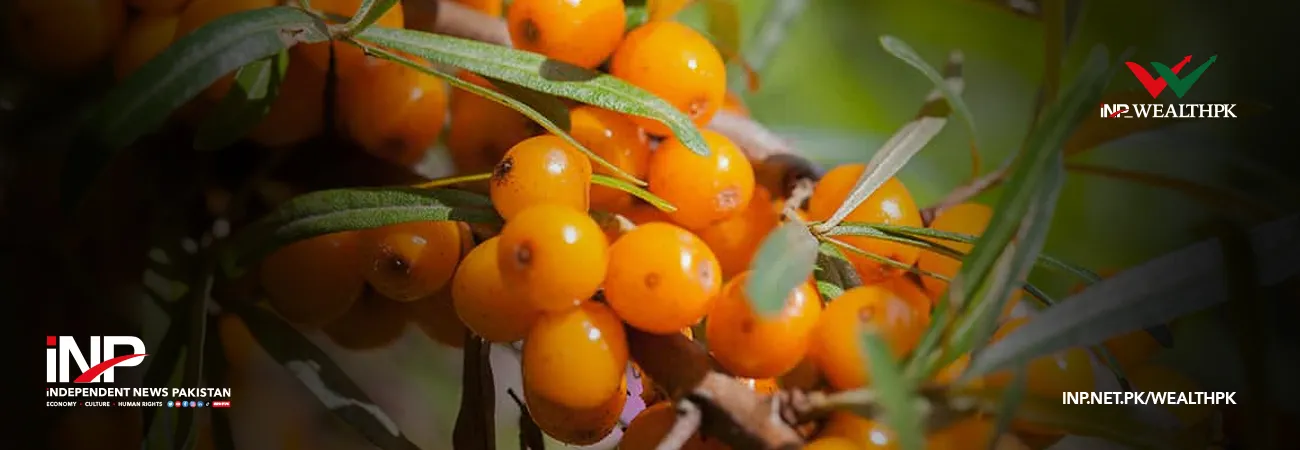INP-WealthPk
Faiza Tehseen
Vast medicinal, culinary and other commercial-scale applications of sea buckthorn make it a valuable plant. Its botanical name is hippophae, but it is also called seaberry, sand thorn, sallow thorn, etc. Sea buckthorn is a deciduous, hard and thorny shrub, used in multiple forms, including oil, powder, liquid concentrate, etc. Globally, it is found in different regions, including North and South America, the Middle East and Africa, Europe and Asia Pacific, etc. Talking to WealthPK, Dr Muhammad Qaisar, head of Medical Botanic Centre, Pakistan Council of Scientific and Industrial Research Laboratories (PCSIR), said the environment of Gilgit Baltistan (GB) was the most favorable for its growth. “Farming of sea buckthorn should be promoted in GB for the collective economic benefit of the region and the country at large, he said, adding that trial plantations in other areas were also important to promote the farming of this valuable thorny shrub.
He said despite its value in the international market, the people of GB were not well aware of its true economic potential and value addition as well. “The GB people prepare jams, jelly and syrup through it for their own use. Some people also export it to Germany and other countries, but not under the government patronage.” Qaisar pointed out that sea buckthorn’s seed contained a good oil ratio and could be extracted using solvent or mechanical cold pressing (MCP). “Through solvent extraction, at least 7-10% of oil can be extracted. The MCP method is much better than solvent extraction. Normally, 40 kilogrammes of sea buckthorn seeds are enough to extract about 4-5kg of oil. If stored in a cool, dry and dark place, its shelf life lasts two years.” He said that owing to their natural benefits, the flower, fruit and leaves of sea buckthorn were extensively used for a variety of industrial applications. “Its fruit and leaves are a prominent source of multiple vitamins like A, C, E and K. They also contain organic acid, carotenoids and flavonoids.
It is used in different forms to cure certain types of cancers, diabetes, immune system improvement, liver and heart diseases. It also improves the autoimmune system.” The PCSIR scientist said besides pharmaceutical uses, sea buckthorn was also used in cosmetics, personal care products, beverages, dietary supplements, animal feed, etc. “Dry or fresh leaves of sea buckthorn are used to brew healthy tea in many parts of the world.” He said it was important to raise awareness among the people about the value of natural herbs, shrubs and plants, so a sustainable economic sector could be established. The sea buckthorn oil market is projected to grow to $41.11 million by the year 2030 at a compound annual growth rate of 6.8% from $19.89 million as valued in 2021. Open woodland and woodland edges are its favourite places to nourish. The growth and value addition of sea buckthorn can be promoted as a cottage industry to help people earn sustainable incomes.
Credit: INP-WealthPk













